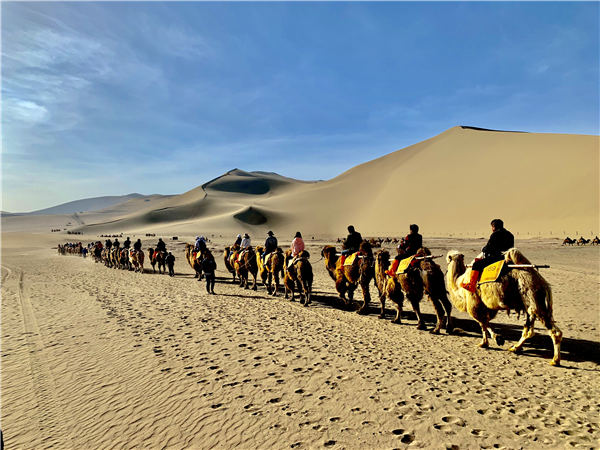 |
|
Visitors join camel caravans to explore the desert. [Photo by Erik Nilsson/China Daily] |
But its appeal is very real.
The water body is set among the Singing Sand Dunes, so named because they resonate in the wind.
Nearby, Dunhuang's Silk Road legacy is literally set in stone at the Mogao Grottoes.
Legend has it that monk Yue Zong sat sweltering in the searing sunlight near a river in front of a mountain, admiring the landscape's exceptional feng shui, in 366 AD. He decided to dig a dwelling at the point where the sun sank behind the crest as it set.
Others followed suit over the following millennium, whittling a honeycomb of caverns inhabited by aristocrats, refugees and monks.
The hundreds of chambers serve as unintended time capsules since they were, in the truest sense, shaped by the periods during which they were excavated and renovated.
The statues and frescoes not only venerate Buddha but also record the history of exchanges between China and dozens of nations to its west.
The caverns also housed the largest collection of historical documents found along the Silk Road - 40,000 writings and artworks spanning several centuries and languages hidden in a secret passage behind a fake wall.